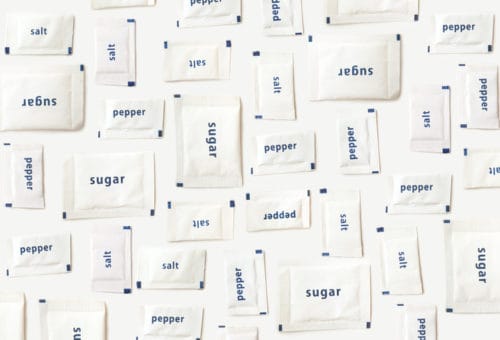For many years, plastic has been the standard in packaging. As concerns mount over environmental issues, however, there’s increasing demand for sustainable alternatives.
In some cities, such as San Francisco, governments are passing legislation that bans the use of plastic bags, while many retailers are proactively taking steps to “go green.” Popular food retailer Whole Foods, for instance, no longer uses plastic bags, and 60% of Apple’s paper packaging is now made from recycled wood fibers.
 According to a recent survey, over half of American consumers said they would choose green products over conventional options if given the choice.
According to a recent survey, over half of American consumers said they would choose green products over conventional options if given the choice.
Green packaging is no longer just a niche marketing tactic; with long-term benefits easily outweighing the added costs, they’re imperative for remaining competitive in today’s changing landscape.
Making the decision to go green is simple. Understanding the various packaging options, costs, and marketing claims is often a challenge for brand owners.
Sierra Coating has been researching and working with poly replacement alternatives for years. Our team can shorten the product development stage by having already screened and tested a number of market-ready alternatives.
When developing an eco friendly package, it’s important to consider the specific usage standards that your application requires as well as material disposal methods.
The Ideal Solution
When choosing between biodegradable, compostable, and recyclable packaging; it’s important to ensure the chosen material does, in fact, reduce waste efficiently and effectively.
At current standards, there are three optimal solutions for creating an eco friendly package:
- Make the package smaller to reduce your footprint
- Utilize recycled materials to create the package
- Create a recyclable package that can be disposed of in a sustainable manner
For many packaging applications, paper is an ideal solution. Folding cartons are ubiquitous; they are used to ship everything from electronics to pharmaceuticals and provide a sustainable, customer-friendly experience.
Folding cartons can be made out of recycled materials and coated with environmentally-sustainable barrier coatings. Not only is folding carton sturdy, lightweight, and customizable; it’s also cost efficient.
Eco-Friendly Packaging and Disposal Options
Compostable Packaging’s Geographic Limitations
When disposed of properly, compostable products will break down through microbial digestion into humus, providing valuable nutrients to the soil without releasing toxins or metals.
Under the right conditions, this process takes approximately 180 days. However, this is rarely the case. According to ASTM standards, compostable products must be disposed of at a municipal or industrial facility that uses heat to properly break down the product.
Retailers rarely have control over consumers’ disposal methods. Compost facilities are usually located in major cities, limiting the impact and effectiveness of a brand’s sustainability effort.
More often than not, materials end up in trash cans and eventually in landfills, which are not conducive to the sustainability goal of the compostable package.
Biodegradable Packaging’s Greenwashing Association
Biodegradable packaging materials are broken down by bacteria, fungi, or other microorganisms. This occurs through either anaerobic (without oxygen) or aerobic (with oxygen) degradation.
Unlike other sustainable products, biodegradable materials are not required to meet any specific industry standards or regulations.
And because virtually everything is biodegradable, whether it happens in one year or 100, marketers often exaggerate claims of biodegradability. In fact, the ubiquity of the term has come to be associated with “greenwashing,” misleading consumers about the true environmental impact.
To combat this, the Federal Trade Commission (FTC) has set forth the Green Guidelines as a benchmark for marketers.
These guidelines state that a biodegradable product “will completely break down and return to nature within a reasonably short period of time after customer disposal.” However, the FTC has yet to pinpoint what is considered a reasonably short period.
Recyclable Packaging: The Most Eco Friendly Option
Recyclable packaging, on the other hand, can be remanufactured into something new after its initial use. Similar to composting, the efficacy of recycling depends on a number of factors.
First, the end user must make the decision to recycle the product, and their recycling center must have the capabilities to recycle that specific material. (Recycling guidelines can vary greatly by region). Also, the product cannot contain any food contamination.
When these requirements are met, recyclable packaging is often the most eco friendly option, since it allows the material to be reused for the same purpose.
Although recycled material requires energy, it still increases the overall product lifecycle. Manufacturers can also take more responsibility themselves by using recycled material as an input of the base product, rather than relying solely on the consumer to recycle.
Additional Resources for Packaging Engineers
At Sierra Coating Technologies, our team of experts can work with you through the development process and customize packaging solutions for your unique needs. Interested in learning more about green, paper-based packaging options?
Further your search and gain a clearer understanding of industry-specific applications with our Glossary of Top Misunderstood Terms in the Paper Industry, or contact our team directly to discuss your next project.
DOWNLOAD Glossary Guide
 Food and food packaging companies are now pursuing various methods to meet consumers’ desire for conveniently packaged food. The specific solutions used, however, depend on the food product itself.
Food and food packaging companies are now pursuing various methods to meet consumers’ desire for conveniently packaged food. The specific solutions used, however, depend on the food product itself.


 According to
According to